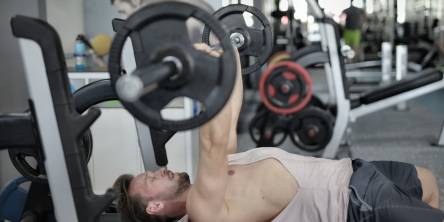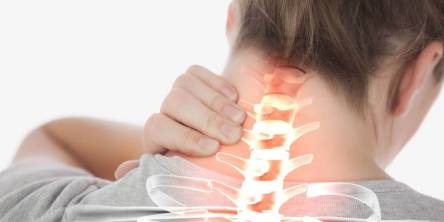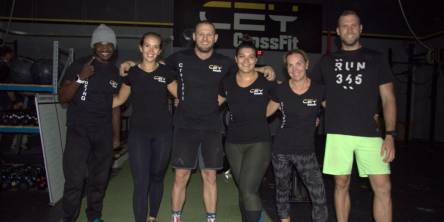Top 6 Ways to Optimize Health of Your Muscles

Usually, when thinking about muscles your first thought are biceps, triceps, pecks or quads, and even abs. And yes, these are all muscles but they are mostly skeletal muscles.
There are three types of muscles in the human body – skeletal, smooth, and cardiac muscles. A grown human body has more than 650 skeletal muscles and billions of smooth muscle cells. Each of these muscles has a specific function in our bodies. You’re probably mind-blow right now. Still, let’s keep finding out interesting things about our construction.
Skeletal muscles are connected to our bones via tendons and can be found everywhere in our bodies thus their functions are many. Skeletal muscles are responsible for the movement of our bodies, maintaining posture and structural support, and so on.
Smooth muscles are found in our organs and organ systems such as digestive and respiratory, cardiovascular, and reproductive systems, to name a few. The role of muscles in a digestive system is to move food along our digestive tract, for example. Or in the case of a cardiovascular system to maintain circulation.
And finally, cardiac muscles can only be found inside our hearts and they allow our hearts to beat and pump blood through our bodies.
All these muscles are involuntary as they are not controlled with our consciousness.
As you can see muscles represent an intricate system that is important for our overall health. They help us move, eat, breathe, simply put they help us live.
So, what can we do to help them function better, and how can you optimize their health? And can we actually do that?
The answer is yes, we can help our bodies muscles in many different ways. To find out how to do that, check out our top 6 ways to optimize muscle health.
Hydration
How many times have you read about the benefits of staying hydrated? This time it’s no different – water is important for muscle health.
Water carries oxygen to the muscle cells and it also provides them with electrolytes that are necessary for their control and strength. When you drink enough water your muscles work longer and harder – and this helps build them.
So, the water that you drink prevents the shrinking of the muscle cells which in turn prevents muscle breakdown. The average amount of water that you should drink per day usually varies from person to person, but some unwritten 8x8 rule is that everyone should drink eight 240ml glasses of water.
Diet
‘We are what we eat’, a term coined centuries ago that can still be very much applied to everyone today. What you eat impacts the health of your whole body, including your muscles.
With the right kind of diet, you can help your muscles function correctly. You can help your muscles regain strength and repair themselves by starting a balanced diet that will contain all the necessary nutrients such as vitamins and minerals, carbohydrates, protein, and fats.
Vitamins and minerals found in healthy foods are vital for healthy muscles. Similarly, carbohydrates are supposed to give you the energy to perform physical activities as they promote the release of insulin for your muscles to build new tissue. Whole grains, veggies, and fruit are perfect sources of carbohydrates.
Protein is what muscles are mostly made of, so it’s only natural that you should replenish them through your diet. Protein is easily lost during the workouts so it should be replenished regularly. Protein can be found in dairy products, eggs, meat, and seafood to name a few.
Fats. People have a negative connotation to the word fat, but to keep our muscles healthy we need to incorporate unsaturated fats into our diet. They are essential for muscle recovery and we can find them in olive and peanut oil, walnuts, fish oil, and so on.
Exercise
Working out is highly important for the health of our muscles. It’s obvious that people who work out have stronger and healthier muscles.
Any sort of exercise will help you build muscle – running, jogging, swimming, jumping, and other similar exercises. You can also start any training program that will get you at least 30 minutes of exercising.
In case you want to build your muscle, use weights such as dumbbells or weight machines and of course, resistance bands. When you use weights and bands you provide resistance to your muscles, which in turn creates a physical change in the tissue of your muscles.
Massages
If you want to maintain the health of your muscles a good solution is a massage. There are many benefits to getting a massage and one of the main ones is to stimulate an increase of blood flow. The blood that flows through our body carries many nutrients that are highly important for the health of our muscles. Similarly, oxygen is also delivered to our muscles through the blood.
There are various types of massages that can help increase the performance of our muscles, also help in their recovery, and decrease pain. Some of them include deep tissue massage, sports massage, and remedial massage. The purpose of all of these massages is to keep your muscles healthy.
As a regular massage is good for the health of our muscles, you can also invest in some home massage tools and gadgets. For example, you can get a good massage chair and put it as a center piece in your living room, and use it whenever your muscles need relaxation.
Warm-up and stretching
You should never start a workout without stretching or warming up first. Warm-up is an essential part of keeping your muscles healthy.
It is a great way to prepare your muscles for any training you're about to do. With warm-up, you are raising your heart rate and activating muscles and in that way, you’re avoiding any potential muscle injuries.
The warm-up should last anywhere from 10 to 20 minutes and it should target the muscles you’ll be using during the workout.
Similarly, by stretching you are allowing your muscles to become flexible and thus reducing the chances of any muscle tear. You can perform stretching exercises right after the warm-up and at the end of the workout. The stretching should last 10 to 15 minutes.
Get enough sleep
Your muscles also require time to re-knit and recover after every strengthening exercise. This is where sleep becomes crucial. If you want your muscles to properly recover after every stress you put on them, you need to get enough sleep.
When we sleep our muscles tissue is repairing and this is why we need at least 8 hours of undisturbed sleep every night.
Additionally, avoid repeating the same strengthening exercises day after day because your muscles won’t have enough time to recover and rebuild, they will only continue to break down.
Approximately 48 hours is what your muscles need to rebuild and recover, so give them time and get enough sleep.
Conclusion
Keeping your muscles healthy is crucial for your overall health. As you can see there are many ways to keep your muscles strong and also to further optimize their health.
Heaving healthy muscles means being more flexible, also stronger muscles protect our joints. Healthy muscles mean less body fat and thus lower blood sugar and stress, more energy, and so on.
You can transform your whole body and its health just by optimizing the health of your muscles. So, start slowly and then work towards incorporating each of these tips into your life. You won’t regret it!
Similar Articles
A post-surgical rehab or recovering from a stroke, patients can regain function and mobility under the watchful eye of their doctor and therapist.
Do you want to build your triceps but do not like the heavy and dense biceps exercises? You can consider incorporating French press exercises into your routine. It is a light strength-training workout that targets your triceps.
If you suffer from neck pain, you can try physical therapy in order to reduce painful sensations and improve the range of motion and mobility of the neck. Your physiotherapist can tell you what you need to do to quickly recover and return to your regular activities.
What defines health & fitness? Most people would associate a person with a great sculpted physique to be of a healthy standard of fitness. Fitness nowadays seems to be measured upon (a six-pack) (how many blocks of abs are showcased), or a minimum of subcutaneous fat around the waist or large visible defined muscles.
Many looking for an "escape hatch" from today's typical hectic and unhealthy lifestyles are turning to a conveniently located gym as a viable solution.
While everyone knows about classic ab workouts like crunches and sit-ups, very few people realize that there are other abdominal exercises that can give them a six pack. Click here for an overview of the best exercises for building a six pack.






